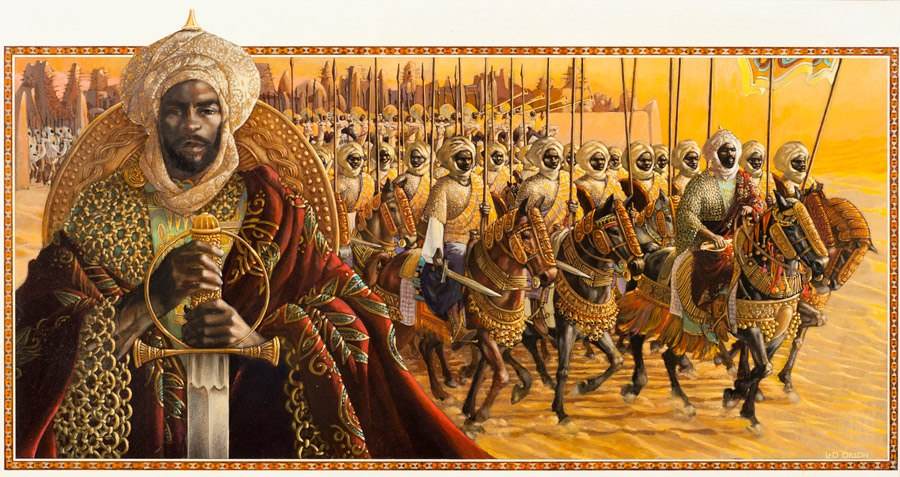
Mansa Musa and The Land of Gold
Share
Mansa (King) Musa ruled the Mali Empire in the 14th century and his land was laden with lucrative natural resources, most notably gold. He was also a successful military leader, having captured 24 cities, according to David C. Conrad's "Empires of Medieval West Africa: Ghana, Mali, and Songhay." But it was his Islamic faith that prompted him to make his pilgrimage to Mecca in 1324, thus exposing his extraordinary riches to the outside world.
Musa Keita I came into power in 1312. At the time, much of Europe was struggling and and facing declining gold and silver production, while many African kingdoms were thriving.
Mansa Musa was in charge of a lot of land. To put it into perspective, he ruled all (or parts) of modern day Mauritania, Senegal, Gambia, Guinea, Burkina Faso, Mali, Niger, Nigeria, and Chad. All in all, his empire stretched about 2,000 miles.
Mansa Musa wasn't stingy about his wealth. He would frequently bestow gifts upon dignitaries he met with. On his stop in Cairo, he spent so much gold to the poor that he caused mass inflation.
While Mansa Musa's famous for his gold today, "... his vast wealth was only one piece of his rich legacy," Jessica Smith reported in a TED-Ed original lesson. "Material riches weren't the king's only concern," Smith reported. "As a devout Muslim, he took a particular interest in Timbuktu." He urbanized the city of Timbuktu by building schools, mosques, and a major university.
Source: BlackPast.org, TED-Ed, "The Global Atlantic: 1400 to 1900," "The African and Middle Eastern World, 600-1500"


